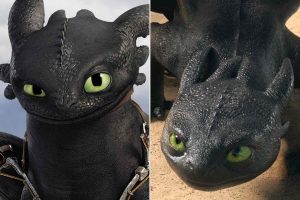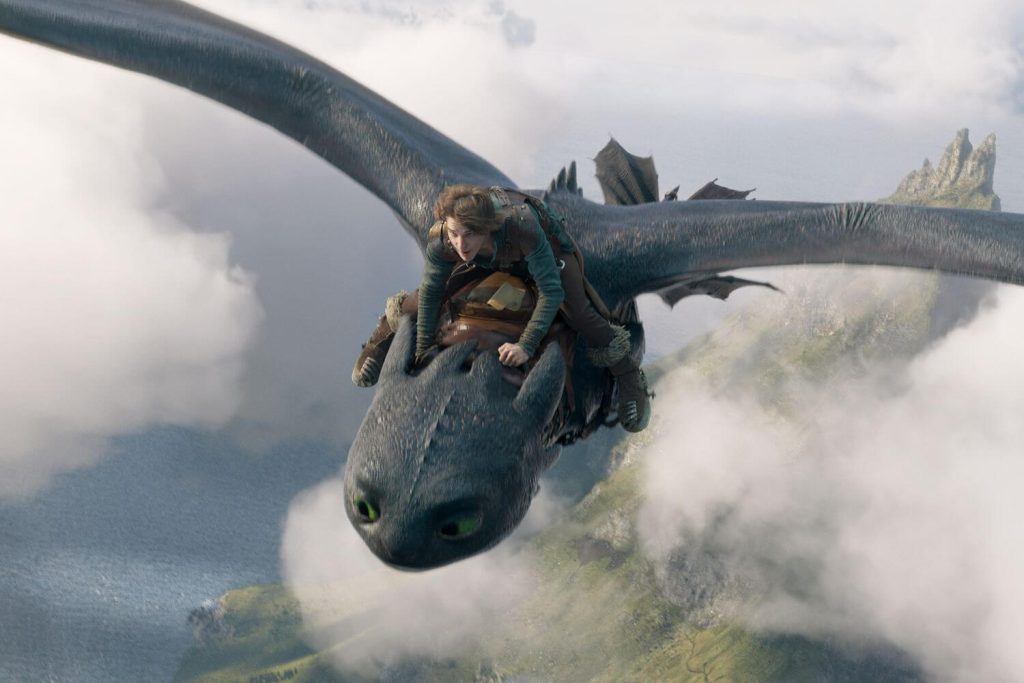World News
How Toothless Came to Life: The Secrets Behind the Flying Scenes of “How to Train Your Dragon”
Introduction to Toothless: The Iconic Dragon of “How to Train Your Dragon”
“How to Train Your Dragon” has become one of the most beloved animated franchises of all time, captivating audiences with its heartfelt storytelling, unforgettable characters, and stunning animation. At the heart of this franchise lies Toothless, the Night Fury dragon, whose majestic and graceful flight scenes are a cornerstone of the film’s success.
Toothless is not just a dragon; he is a symbol of the bond between human and animal, the beauty of freedom, and the complexity of friendship. Created by the skilled animators at DreamWorks Animation, Toothless’ design and the scenes depicting his flight pushed the boundaries of animation and technology. His flight sequences, in particular, required an incredible amount of effort, creativity, and innovation from the filmmakers.
But what makes Toothless so special? It’s not just his design, but the way he moves—how he glides, flaps, and soars through the sky. These flying sequences are an art form in their own right, and much of the success of the franchise owes itself to the breathtaking way in which Toothless was brought to life. The challenge of animating Toothless’ flight, and of capturing the true essence of a creature with such a unique set of movements, was a complex yet rewarding task.

The Role of Animation and Technology in Creating Toothless’ Flight
To truly understand how the flying scenes of Toothless were created, one must first appreciate the groundbreaking animation technology and techniques employed by DreamWorks. “How to Train Your Dragon” was released in 2010, at a time when CGI animation was already well-established, but it was still evolving rapidly.
Toothless’ flight sequences, in particular, pushed the boundaries of what was possible in animated films. The animators used a combination of traditional animation principles and cutting-edge CGI techniques to create the dragon’s flight in a way that felt natural and believable. The filmmakers wanted Toothless to appear as though he were actually soaring through the sky, with a sense of weight, balance, and momentum that matched real-world physics. However, they also wanted to maintain the fantastical elements of his design.
This is where technology came into play. Advanced 3D modeling and simulation software allowed animators to create incredibly detailed environments and dragon movements. The filmmakers used “rigging” to create a digital skeleton for Toothless, which allowed them to animate his movements with a high degree of flexibility and realism. Toothless’ wings, in particular, posed a significant challenge. They had to move in a way that felt both believable and fantastical, as though they were capable of supporting the dragon’s massive weight while allowing him to glide gracefully.
Moreover, DreamWorks Animation employed wind simulations, fluid dynamics, and particle effects to simulate the air rushing past Toothless as he flew. These technological innovations not only made his flying scenes more realistic but also added a layer of dynamism and excitement to the action sequences. Every flap of his wings, every swoop through the sky, had to be carefully crafted, taking into account both the dragon’s design and the physical laws of flight.
The Challenge of Making Toothless Fly: A Technical Breakdown
Animating a character like Toothless, who is both a fantasy creature and an emotional center of the story, presented several unique challenges. The filmmakers had to balance realism with the fantastical, ensuring that Toothless’ flight felt grounded in reality while still maintaining the sense of wonder that dragons inherently bring to stories.
One of the primary technical hurdles involved creating realistic wing movements. In the world of “How to Train Your Dragon,” Toothless has large, leathery wings, which are not only a defining feature of his design but also a key part of his ability to fly. The animators had to consider how the wings would react to wind resistance and the dragon’s body movements. They also had to make sure that Toothless’ flight was consistent with the rules of aerodynamics while allowing for the fantastical elements that make Toothless so captivating.
The team also had to account for Toothless’ unique body structure, which was designed to be both sleek and powerful. Unlike more traditional dragons, Toothless has a streamlined body that mimics the aerodynamic shape of modern aircraft. His flight scenes had to reflect this design, with the dragon moving swiftly and gracefully, yet with a sense of weight and power behind his every move.
Another challenge was capturing the emotional aspect of Toothless’ flight. As much as his flying needed to be technically accurate, it also had to reflect the character’s personality and emotional state. Flying is a way for Toothless to express his freedom, his joy, and his connection to Hiccup. Animating these nuanced emotions required a deep understanding of both the character and the animation process. The animators needed to ensure that Toothless’ flight wasn’t just a mechanical series of movements, but an emotional experience that resonated with audiences.

Directorial Vision: How Dean DeBlois Brought Toothless to Life
At the helm of “How to Train Your Dragon” was director Dean DeBlois, who, alongside co-director Chris Sanders, played a pivotal role in shaping Toothless’ character and ensuring that his flying scenes captured the imagination of audiences. DeBlois’ vision for the film was clear: he wanted the flying sequences to not only showcase Toothless as a creature of beauty and power but also serve as a reflection of the character’s emotional growth.
DeBlois was deeply involved in every aspect of the film’s production, from the design of the dragons to the animation of their movements. His approach to Toothless’ flying scenes was centered around the idea of creating a sense of freedom and exhilaration. In interviews, DeBlois has spoken about how important it was to capture the feeling of flight, not just as a physical action but as a deeply emotional experience. For Toothless, flying wasn’t just about moving through the air—it was a way of expressing his trust in Hiccup and his newfound freedom.
To achieve this, DeBlois and the animation team worked closely with the voice actors, particularly Jay Baruchel (Hiccup) and America Ferrera (Astrid), to ensure that Toothless’ movements aligned with the emotions of the story. The animators were tasked with finding a balance between the dragon’s physicality and his emotional expression, creating a flying sequence that was both thrilling and deeply moving.
One of the most iconic scenes in the film, the flight scene between Hiccup and Toothless, exemplifies this approach. The sequence is not only a stunning visual spectacle but also a turning point in the relationship between the two characters. It marks a moment of mutual trust and understanding, where Toothless and Hiccup learn to work together as a team. The animation reflects this emotional connection, as Toothless’ flying is a graceful dance that mirrors their growing bond.
How To Train Your Dragon The Alpha Protects Them All Tumbler With Handle And Straw
Legacy of Toothless’ Flying Scene: How It Influenced Animation
The flying scenes of Toothless became a benchmark in animation, influencing not just the “How to Train Your Dragon” franchise, but the animation industry as a whole. The seamless integration of realistic flight mechanics with a fantastical creature became a reference point for animators looking to create believable flying creatures. Toothless’ flight sequences are often cited as some of the most groundbreaking in CGI animation, setting a new standard for how to animate creatures in flight.
Moreover, the emotional weight carried by these flying scenes has inspired countless other animated films to place more emphasis on the connection between character movement and emotional storytelling. In Toothless, animators were able to create a creature whose flying wasn’t just an action—it was an expression of his personality and his relationships.
In the years following the release of “How to Train Your Dragon,” filmmakers have continued to explore the potential of CGI animation in creating fantastical creatures with realistic movements. However, the flying sequences of Toothless remain some of the most iconic in animation history, a testament to the skill, creativity, and technological innovation behind them.
Toothless has since become a cultural icon, and his flying scenes continue to resonate with audiences of all ages. As technology continues to advance, the legacy of Toothless’ flight serves as a reminder of the power of animation to evoke emotion, create connection, and tell stories that transcend the screen.
From newvisiondesignus


